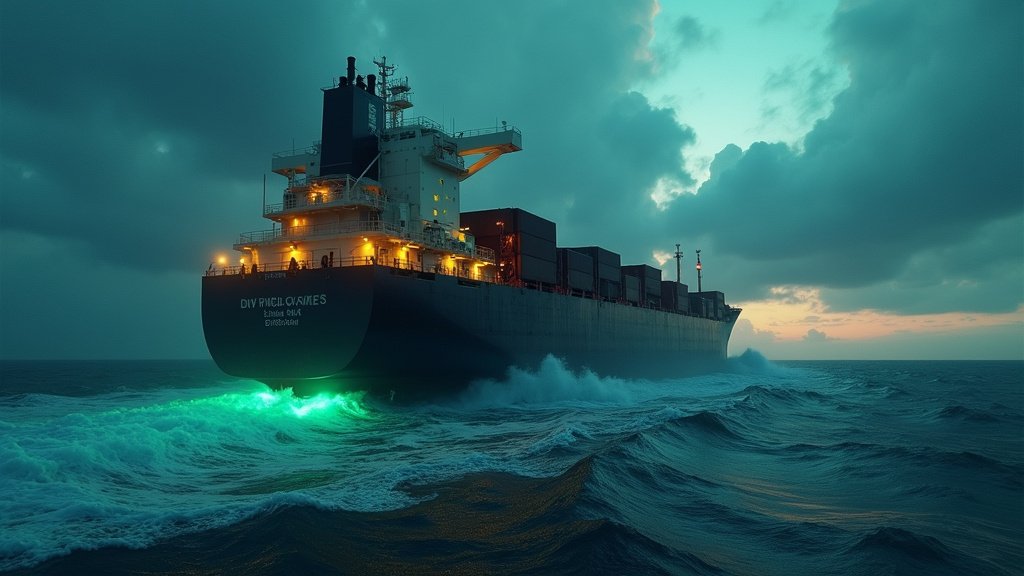The global dry bulk shipping sector finds itself at a pivotal juncture, grappling with a confluence of legal challenges, strategic fleet expansions, and increasingly stringent environmental regulations. Recent developments, including a high-profile release from a Turkish prison, the long-awaited auction of a detained vessel in the Caribbean, significant newbuild orders, and the ongoing debate surrounding maritime emissions, underscore the multifaceted nature of the industry’s current landscape.
Seafarer’s Ordeal and the Peril of Drug Smuggling
In significant news for the maritime community, Croatian bulker Captain Marko Bekavac was released on August 8, 2025, from a Turkish prison, where he had been held for nearly two years. Bekavac was arrested in October 2023 after Turkish authorities discovered 137 kilograms of cocaine on his Panama-flagged vessel, Phoenician M, upon its arrival in Eregli from Barranquilla, Colombia. Despite being sentenced to 30 years in September 2024, Bekavac consistently maintained his innocence, asserting that he had reported inadequate security in Colombia and even alerted authorities to a small cocaine find before reaching Turkey.
His release has been attributed to persistent diplomatic efforts by the Croatian government. However, his chief officer, Ali Albokhari, a Finnish citizen, remains imprisoned with the same 30-year sentence, awaiting an appeal. This case highlights a disturbing trend where crew members are increasingly vulnerable to severe legal penalties when drugs are found aboard their vessels, especially those engaged in shipping from South and Central American ports, often without direct involvement in smuggling operations.
The Lingering Saga of the MV Trading Fabrizia
Another focal point in recent shipping news is the impending auction of the Italian dry bulk carrier MV Trading Fabrizia. The vessel has been languishing in Kingston, Jamaica, since November 2016, ensnared in legal proceedings initiated by its former commercial manager, Jebmed of Genoa, over an unpaid debt.
While Capitalease S.P.A. became the new owner following the demise of D’Amato di Navigazione and initially aimed to operate the vessel, subsequent efforts to free it by lodging guarantees against a reduced debt of $400,000 seemingly did not fully resolve its arrested status. The re-emergence of the Trading Fabrizia in auction discussions underscores the protracted and often complex challenges of maritime asset recovery, where vessels can remain in legal limbo for years, tying up capital and operational potential.
Strategic Fleet Expansion Amidst Market Shifts
Despite prevailing market uncertainties, major players in dry bulk shipping are pressing ahead with strategic investments. CSSC Shipping, the Hong Kong-listed leasing arm of state-owned China State Shipbuilding Corporation (CSSC), has announced plans to bolster its dry bulk portfolio. The company has ordered two new Newcastlemax bulk carriers, each with a deadweight tonnage of 210,400, from Qingdao Beihai Shipbuilding and China Shipbuilding Trading.
These newbuilds, priced at approximately $73.5 million per vessel (or $150 million for the pair), are scheduled for delivery by December 2027 and March 2028. This acquisition is part of CSSC Shipping’s broader strategy to optimize its fleet, which already comprises over 30 bulkers. This forward-looking investment comes amidst a backdrop of weakening dry bulk supply/demand balance projected for 2025 and 2026, influenced by a slowing Chinese economy and shifts in global trade policies. Newbuilding orders across the dry bulker segments have seen a sharp slowdown in 2025, with overall sales and purchase activity also decreasing compared to the previous year.
IMO’s Green Push: Navigating New Emission Horizons
Environmental regulations continue to be a dominant force shaping the future of global shipping. The International Maritime Organization (IMO) has made significant strides, approving a comprehensive “Net-Zero Framework” in April 2025. This landmark initiative aims to achieve net-zero greenhouse gas (GHG) emissions from ships by or around 2050.
The framework introduces a mandatory marine fuel standard and a global pricing mechanism for emissions, with formal adoption expected in October 2025 and entry into force in 2027. The proposed economic measure includes a fee of $380 per tonne of CO2 for exceeding emission intensity limits, plus an additional $100 per tonne for exceeding baseline levels, designed to incentivize cleaner operations. This ambitious plan, however, faces opposition, notably from the US (Trump administration), which has expressed strong rejection of what it labels a “global carbon tax” and threatened retaliation against nations supporting it.
Beyond global measures, regional Emission Control Areas (ECAs) are expanding. The Mediterranean Sea was designated an ECA as of May 1, 2025, imposing a stricter 0.1% sulfur limit for marine fuels. Further ECAs are slated for the Canadian Arctic and Norwegian Sea (effective March 2026), with plans for a Northeast Atlantic ECA by 2028. These regulatory shifts are driving changes in fuel demand and fostering a preference for newer, more eco-efficient vessels and slower operational speeds to ensure compliance.
Outlook: A Sector in Transition
The dry bulk shipping market is navigating a complex and dynamic environment. While the release of Captain Bekavac brings some relief to the ongoing human cost of maritime drug trafficking, and the auction of the MV Trading Fabrizia might offer a resolution for a long-stranded asset, the industry’s underlying fundamentals are in flux. Slowing global trade growth, persistent geopolitical tensions, and ambitious environmental mandates are pushing chartering strategies towards greater efficiency and sustainability. The blend of legal precedents, strategic fleet upgrades, and evolving regulatory frameworks will continue to define the trajectory of bulk shipping in the years to come.

